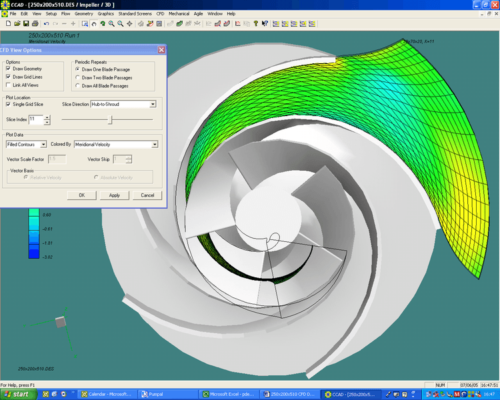Balancing pump efficiency with NPSH is the key to delivering a cost effective package
FOR IMMEDIATE RELEASE – 15 August 2008

Balancing pump efficiency with NPSH is the key to delivering a cost effective package
Selecting a pump is a balance of many factors, including the volumes and contents to be pumped, the efficiency of the pumps and how frequently the pump will be run. Where space is at a premium or the cost of changing structures or pipework prohibitive, then engineers may also have to deal with an additional factor, a lack of suction static head. Not taking the suction static head into account fully can cause catastrophic cavitation to occur in the pump. Oliver Brigginshaw, Managing Director of Amarinth, a leading company specialising in the design, application and manufacture of pumps and associated equipment, explains NPSH and how pumps can be cost effectively engineered to operate in a low NPSH environment.
Cavitation occurs when the pump cannot get enough liquid and the resulting reduction in pressure causes liquid to vaporise and form bubbles. These bubbles can grow dramatically and choke an inlet, further reducing the flow of liquid and the performance of the pump. In addition, these bubbles can implode with tremendous force, literally tearing away at the metal. The resulting increase in vibration and noise can lead to premature component replacement and in some cases complete failure of impellers.
To avoid this catastrophic situation, the pump manufacturer should always ask you for the Net Positive Suction Head available at the pump - NPSH(A) - and ensure this exceeds that required by the pump to operate without cavitation occurring – what is known as NPSH(R). See Fig 1.
NPSH(A) is in principle a straight forward calculation, taking into account the suction static head, friction losses, atmospheric pressure and the vapour pressure of the liquid. However, caution must be exercised with the latter parameter, as in an industrial process the liquid may be a cocktail of chemicals and so the vapour pressure may need to be determined experimentally. Also, does the static head change during the process of pumping the liquid, for example during the emptying of a vessel?
For a given NPSH(A), the pump manufacturer will provide a pump with an NPSH(R) less than NPSH(A) by some 0.5M, though if the accuracy of the data is circumspect (such as pumping a cocktail of fluids), then it may be better to increase this difference.
Generally pump manufacturers design their pumps to work at maximum efficiency and hence the lowest running costs. Efficiency is related to pump speed and so the speed is fixed to deliver the maximum efficiency for a given pump. These parameters dictate the NPSH(R) for any given pump.
Important as efficiency is in a pump though, it is not the only criteria when selecting the most cost effective pump for the job. Achieving the necessary static head to run a pump at its optimum efficiency may be either impossible to achieve or could involve costly changes to plant structure, pipe work and associated equipment. If faced with this situation, what are the alternatives?
Computer modelling techniques have better enabled us to understand fluid dynamics and how we can design a pump to run efficiently in a low NPSH environment. However, many of the pumps sold today have designs that date back 50 years and their manufacturers often have neither the desire, skills, nor wish to make the investment in new patterns to deliver a low NPSH alternative.
This means that if you require a low NPSH pump then you need to turn to one of the specialist pump companies such as Amarinth. Having made significant investments in computer aided engineering tools and engineering staff skilled in fluid dynamics, these companies are the race car equivalents of the road car world.
Using sophisticated tools and techniques they can “tune” existing designs and re-engineer key components to produce pumps capable of delivering the required performance within the NPSH constraints of the plant. They also have comprehensive test facilities, as finding the point of cavitation reliably is a crucial, but largely empirical, process.
The resulting pump will be one that can deliver the specified performance within the suction static head constraints at an efficiency approaching that of a standard pump. The cost of undertaking these modifications is of course not cheap, but it is almost always outweighed by the cost or sheer impracticability of modifying the plant structure.
A good example of a low NPSH application where there was no option to create the necessary static head can be found on a Floating, Production, Storage and Offloading (FPSO) vessel. Wood Group, a global market leader in deepwater engineering, was working with Amerada Hess on a sophisticated filtration system that would enable their Triton FPSO vessel located in the North Sea to meet the pending OSPAR regulations. The project demanded ten high specification pumps to pump the produced water. These had to have a small enough footprint so that they could squeeze within the tight space constraints of the Triton vessel and the restriction of existing headroom so that pumps would have to operate in a very low NPSH (A) environment, leaving them prone to cavitation.
Initially a "vertical in-line pump" was considered but this was quickly ruled out as it required significant headroom to remove the motors during maintenance, which was not available. Additional pipework before and after the pump would also have been required, expanding the footprint beyond the space available.
To achieve the dimensional space constraints within the tight contract deadline, a completely new pump design was not feasible and so Amarinth proposed a hybrid design. This was based on its proven ‘C’ series heavy duty ISO 5199 chemical pump. This “horizontal” pump would fit the space constraints and was already suited to operating in low NPSH environments.
Up-rated API 610 bearing brackets were designed and incorporated which would allow the pump to meet the demands of the application, both in terms of the space available and the NPSH constraints of the vessel, thus achieving Wood Group’s requirements of low maintenance, high reliability pumps that required low NPSH(R). The alternative would have been to redesign the system and pipework or at worst build new decks to deliver the NPSH (A) that a standard high efficiency pump would require for normal operation.
This project showed that by choosing the correct pump for the application and focusing on low NPSH rather than high efficiency, Wood Group was able to make significant cost savings on the overall project as the major system and vessel changes that would have been required to accommodate other pumps were avoided.
Available for download in PDF format, simply click the button below to download.
Download FileNOTES TO EDITORS:

Amarinth is a carbon net zero organisation delivering world-leading expertise in the design, application and manufacture of centrifugal pumps and associated equipment for critical applications in many of the most arduous and hostile environments around the globe.
Founded in 2002, Amarinth has harnessed the skills, creativity and passion of people who have worked in the pump industry for decades, delivering bespoke API and ISO pumps primarily to the offshore and onshore oil & gas industries; nuclear and renewable energy generation; defence; desalination; process and industrial markets.
The company’s innovative approach, business agility and use of sophisticated computer applications enables it to deliver robust, reliable and sustainable pumping solutions on the shortest lead times in the industry.
• Process pumps – API 610, API 685, ISO 5199 horizontal, vertical and in-line bespoke process pumps, including ones that are hydraulically and dimensionally interchangeable with the former Girdlestone and other obsolete pumps.
• Skid packages and modules – Supplied with a variety of drives for applications including de-sanding, mixing, filtration and chemical injection and tailored for the oil & gas, water treatment and power generation industries.
• Condensate recovery – Cutting-edge design providing low NPSH up to 98°C with variable speed drives to reduce cycle time and lower operating costs, available in stainless steel, galvanised or copper tanks for light or heavy industrial uses.
• Seal support – Integrated pressurised and vented seal support systems designed and delivered to API 682 and ISO 5199 standards and specific site specifications and requirements, working closely with AES, Eagle Burgmann, John Crane and Protect System.
• Spare parts – Critical spares for all Amarinth pumps and related components can be dispatched the same day, reducing potential downtime, and in addition components for the former Girdlestone and other obsolete pumps can be re-engineered often improving the performance of existing assets.
• Services – A full range of pump related services, delivered from UK head office or on-site globally, onshore or off-shore, including full commissioning and start-up support; also strip, report and refurbishment of any pump regardless of manufacturer.
Amarinth operates globally from its base in Rendlesham Suffolk, United Kingdom and offices in the Middle East and Malaysia with a global customer base, including BP, Shell, ADNOC, NOV, ExxonMobil, Schlumberger, COSCO, EDF, GlaxoSmithKline, Saudi Aramco, Pfizer, Diageo, Kuwait Oil Company, AMEC, Fluor, LUKOIL, Halliburton, and Babcock.
For further information or photos contact
Comment:
Alex Brigginshaw
Commercial Director
Amarinth Limited
Bentwaters Park, Rendlesham
Woodbridge IP12 2TW
United Kingdom
Tel: +44 (0)1394 462131
Mobile: +44 (0)7703 681821
Alex.Brigginshaw@Amarinth.com
Media Relations:
Phil Harland
B6 Solutions Limited
29 Swan Drive
The Wharf, Aldermaston
Reading RG7 4UZ
United Kingdom
Tel: +44 (0)118 971 3271
Mobile: +44 (0)7880 748380
Phil.Harland@B6solutions.com

















